Explore null | Canon Latin America

imageRUNNER 2525
-
OVERVIEW
-
SPECIFICATIONS
-
ACCESSORIES
-
RESOURCES
-
SUPPORT
-
MISCELLANEOUS




The imageRUNNER 2525 employs an updated version of the powerful imageCHIP LITE system architecture, consisting of a new CPU to speed up copy, print, fax, scan, and send functions. This architecture integrates the CPU and the image processing technologies onto a single chip, allowing for highly efficient processing of multiple functions simultaneously.
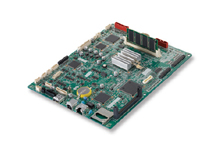
A compact MFP with a smart, comfortable design and innovative integrated accessories that enables the system to be placed in areas with limited space.
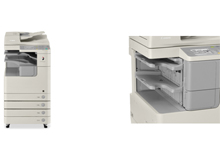
Using a CIS scanning unit, the imageRUNNER 2525 delivers excellent quality for copies and color scans. With a copy scanning resolution of 600x600 dpi and a native print resolution of 1200x1200 dpi, you benefit from the most faithful reproduction of text and images.
An optional 50-sheet Duplexing Automatic Document Feeder makes scanning multi-page and different-sized originals quick and easy.
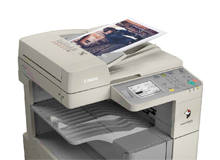
With a maximum paper capacity of 2,000 to 2,300 sheets, the imageRUNNER 2525 enables longer runs between paper fillups, allowing your office to be more productive.
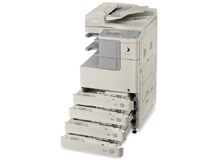
The imageRUNNER 2525 is ready to handle your office prints with UFR II LT printing and 10/100 Base-Tx Ethernet connectivity. Optional PCL 5e/6 and Postscript printing provides added flexibility to support your applications.
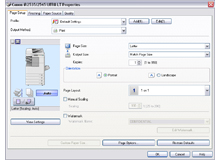
Standard duplexing capability provides users with the ability to copy/print their documents on either one or two sides of paper, saving paper, toner, and energy.
Documents up to 11" x 17" can be scanned in color or black and white at resolutions up to 600 x 600 dpi. These files then can be imported into TWAIN-compliant applications on the desktop through Canon's Color Network ScanGear software.
In addition to Color Scanning, the available Color Send technology gives users the ability to send their scanned documents directly to various destinations such as e-mail addresses, USB memory media, or even a particular folder on their network or computers. Includes support for PDF High Compression technology for efficient handling of color image data, and optional Searchable PDF technology to add OCR data to your scanned documents to make the most of documents.
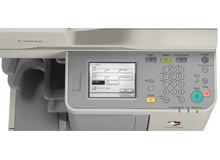
LDAP address book support allows for browsing the corporate address book for easier scan-and-send operations, while also reducing address book maintenance.
The imageRUNNER 2525 gives IT managers control and helps drive cost out of operations with a variety of tools including the standard Remote User Interface, support for Canon's imageWARE Enterprise Management Console application, and Canon's Generic PCL6 driver to simplify driver deployment.
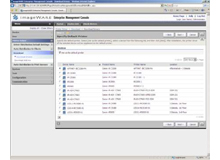
Designed with Canon's RAPID Fusing System to deliver exceptional image quality with less heat and energy to operate, while also allowing fast warm-up times.
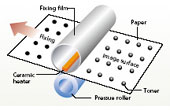
On-the-fly toner replenishment keeps your office productive, so print and copy jobs keep running while the toner is replaced.
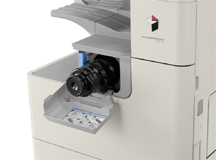
ID Card Copy mode provides a simple way to copy both sides of an ID card onto a single page.
An optional Super G3 fax board delivers the ability to transmit faxes at impressive speeds, without the need for a separate fax machine.
| Model Name | ImageRUNNER 2525 |
| Type | Monochrome Digital Multifunction Imaging System FunctionsStandard: Copy, Print (UFR II LT), Scan Operation Panel 5.7" QVGA Black-And-White LCD Touch-Screen |
| Image Server Memory | Standard: 512MB RAM 120V/256 RAM 230V Maximum: 512MB RAM
Other Interface |
| Letter | Up To 25 Ppm |
| Legal | Up To 13 Ppm |
| Ledger | Up To 15 Ppm |
| First Copy Time | 5.4 Seconds (Letter)) |
| Multiple Copies | 1 To 999 Copy Exposure Automatic Or Manual (9 Levels) |
| Magnification | 25% - 400% (1% Increments)) |
| Preset Reductions | 25%, 50%, 64%, 73%, 78% |
| Preset Enlargements | 121%, 129%, 200%, 400% Basic Copy Features Preset R/E Ratios By Area, Finishing, Two-Sided, Exposure Adjustment, Original Type Selection Special Copy Features ID Card Copy, Two-Page Separation, Image Combination, Frame Erase, Different Size Original, Sharpness, Mode Memory, Booklet |
| Standard Paper Capacity | (20 Lb. Bond): Dual 550-Sheet Paper Cassettes 100-Sheet Stack Bypass Optional: Dual 550-Sheet Paper Cassettes 120V / 250-Sheet Paper Cassete & 500-Sheet Paper Cassette 230V |
| Maximum Paper Capacity | 2,300/2000 Sheets Output Paper Capacity (20 Lb. Bond): |
| Cassette | Cassette 1/3/4: 11" X 17", Legal, Letter, Letter-R, Statement-R, Executive Cassette 2: 11" X 17", Legal, Letter, Letter-R, Statement-R, Executive, Envelopes (COM10 No.10/Monarch/DL/ISO-B5/ISO-C5)* |
| Bypass | 11" X 17", Legal, Letter, Letter-R, Statement-R, Executive, Envelopes, Custom Size |
| Cassette | 17 Lb. Bond To 24 Lb. Bond |
| Warm Up Time | From Power On: 30 Seconds Or Less From Sleep Mode: 1 Second Or Less |
| Power Requirements | 120 V AC, 60 Hz, 230V AC, 60 Hz Plug NEMA 5-15P Power Consumption Maximum: 1,473W; Sleep Mode: 1W |
| Dim | (With DADF): 35-1/4" X 22-1/4" X 27-1/4" (With Platen Cover): 31-3/4" X 22-1/4" X 26-3/4" Installation Space (W X D) 42-1/2" X 56-3/4" (With No Optional Equipment Attached) |
| Weight | Approximately 156 Lb. (Main Unit)** Approximately 172 Lb. (With DADF)** |
| Estimated Toner Yield | 14,600 Images @ 6% Coverage Scan Specifications Print Features Security Specifications Environmental Information
|
| Description | DADF-AB1&Bull; |
| Acceptable Originals | 11" X 17", Legal, Letter, Letter-R, Or Statement Scan Method: Duplexing Automatic Document Feeder |
| Scanning Speed | (BW/Color; Letter): Copy: 25 Ipm (600 Dpi) Scan: 35/25 Ipm (300 Dpi) |
| Capacity | 50 Sheets (Letter) |
| Paper Weights | 14 Lb. Bond To 28 Lb. Bond 28 Lb. Bond To 34 Lb. Bond When Scanning A Single-Page Document |
| Power Source | From The Main Unit/Approximately 27.1W (Maximum) |
| Dimensions | 5" X 21-3/8" X 22-1/4" |
| Weight | Approximately 15.4 Lb. |
| Description | Cassette Feeding Unit-AE1 |
| Paper Capacity | 550 Sheets X 2 Cassettes (20 Lb. Bond) |
| Paper Sizes | 11" X 17", Legal, Letter, Letter-R, Statement-R, Executive Acceptable Paper Type: Plain, Recycled, Color, Pre-Punched |
| Paper Weights | 17 Lb. Bond To 24 Lb. Bond |
| Dimensions | 9-3/4" X 22-1/4" X 26-3/4" |
| Weights | Approximately 52.9 Lb. |
| Description | Envelope Feeder Attachment-D1‡‡ |
| Paper Capacity | 50 Sheets (Or 30mm In Height) |
| Paper Sizes | (Acceptable Envelope Size:) COM10 No.10, Monarch, DL, ISO-B5, ISO-C5 Print Speed: Up To 10 Ppm |
| Power Source | 120V AC, 60Hz, 6.9A Plug NEMA 5-15P Power Consumption Maximum: 1,473W; Sleep Mode: 1W |
| Description | Inner Finisher-B1‡‡‡ |
| Paper Weights | 17 Lb. Bond To 34 Lb. Bond |
| Paper Size | 11" X 17", Legal, Letter, Letter-R, Statement, Statement-R, Executive Acceptable Paper Type: Plain, Recycled, Color (17 Lb. Bond To 21 Lb. Bond), 3-Hole Punch, Heavy Paper 1 (22 Lb. Bond To 24 Lb. Bond), Heavy Paper 2 (24 Lb. Bond To 28 Lb. Bond), Heavy Paper 3 (28 Lb. Bond To 34 Lb. Bond) |
| Number Of Trays | Up To 2 Trays (W/Inner Finisher Additional Tray-B1) Total Output Capacity: Without Inner Finisher Additional Tray-B1: 1,000 Sheets With Inner Finisher Additional Tray-A1: Upper Tray: 100 Sheets (Letter) Lower Tray: 1,000 Sheets (Letter) |
| Staple Capacity | 50 Sheets (Letter) 30 Sheets (11" X 17", Legal, Letter-R) (17 Lb. Bond To 21 Lb. Bond) Paper Capacity Of Staple Mode: Top Tray: 15 Sets (Or 3/8" In Height) Lower Tray: 30 Sets (Or 4-7/8" In Height) |
| Staple Positions | Corner/Double Stapling: 11" X 17", Legal, Letter, Letter-R Type Of Staple: Staple-J1 (5,000 X 3) |
| Power Source | From The Main Unit/Approximately 43.9 W (Maximum) |
| Dimensions | 11-3/5" X 27-3/4" X 21-7/8" (When The Auxiliary Tray Is Extended) |
| Weight | Approximately 27.6 Lb. |
| Description | Inner 2-Way Tray-G1‡‡‡ |
| Paper Weights | 17 Lb. Bond To 34 Lb. Bond |
| Paper Size | 11" X 17", Legal, Letter, Letter-R, Statement-R, Executive Acceptable Paper Type: Plain, Recycled, Color (17 Lb. Bond To 21 Lb. Bond), 3-Hole Punch, Heavy Paper 1 (22 Lb. Bond To 24 Lb. Bond), Heavy Paper 2 (24 Lb. Bond To 28 Lb. Bond), Heavy Paper 3 (28 Lb. Bond To 34 Lb. Bond) |
| Number Of Trays | 2 |
| Top Tray | 100 Sheets (Letter) |
| Lower Tray | 250 Sheets (Letter) |
| Dimensions | 4-1/4" X 16-3/4" X 16-1/4" |
| Weight | Approximately 1.3 Lb. |
| Description | Fax Specifications (Optional) |
| Applicable Line | 1 (Maximum) |
| Modem Speed | Super G3: 33.6 Kbps G3: 14.4 Kbps |
| Data Compression | MH, MR, MMR, JBIG Resolution (Dpi) 400 X 400, 200 X 400, 200 X 200, 200 X 100 Sending/Recording Size Statement-R To 11" X 17" Fax Features Job Forwarding, Different Size Originals, Sharpness, Delayed Send, Finished Stamp, Two-Sided Original |
| Processor | Canon Custom Processor (Shared) |
| Standard Memory | 512MB RAM 120V/256 RAM 230V |
| Maximum Memory | 512MB RAM Engine Resolution 1200 X 1200 Dpi (Maximum) |
| Pdl Support | Standard: UFR II LT Optional: PCL 5e/6, PostScript 3 Emulation |
| Print Controller Technology | UFR II LT, PostScript 3 Emulation: Windows® (Windows 2000/XP/Vista®/Windows 7/Server 2003/Server 2008), Citrix Presentation Server 4.0/4.5, Citrix XenApp 5.0, XenDesktop 2.0/2.1/3.0, Macintosh® (OS X 10.6.1), SAP (PS3 Only) PCL 5e/6: Windows (Windows 2000/XP/Vista/Windows 7/Server 2003/Server 2008), Citrix Presentation Server 4.0/4.5, Citrix XenApp 5.0, XenDesktop 2.0/2.1/3.0, SAP |
| Description | Color Send Specifications (Optional) |
| Sending Method | E-Mail, I-Fax, File Server (FTP, SMB), Super G3 Fax (Optional) Color Mode Color, BW Scan Resolution (Dpi) 600 X 600, 400 X 400, 300 X 300, 200 X 400, 200 X 200, 200 X 100, 150 X 150, 100 X 100 |
| Address Book Capacity | Max. 500 Destinations (Includes 200 One-Touch Buttons) Communication Protocol File: FTP (TCP/IP), SMB (TCP/IP) E-Mail/I-Fax: SMTP, POP3, I-Fax (Simple) |
- Windows Server 2025
- macOS 14
- macOS 13
- Windows 11
- macOS 12
- Windows Server 2022
- macOS 11
- Linux MIPS
- Linux ARM
- macOS 10.15
- macOS v10.13
- macOS v10.14
- Windows Server 2019 (x64)
- macOS v10.14
- macOS v10.13
- Windows Server 2016 (x64)
- macOS Sierra v10.12
- Linux 64bit
- Linux 32bit
- OS X v10.11
- Windows 10
- Windows 10 (x64)
- OS X v10.10
- OS X v10.9
- Windows Server 2012 R2 (x64)
- Windows 8.1 (x64)
- Windows 8.1
- Windows Server 2012 (x64)
- Windows 8
- Windows 8 (x64)
- Windows 7
- Windows 7 (x64)
- Windows Vista
- Windows Vista (x64)
- Windows XP
- Windows XP (x64)
- Windows Server 2008
- Windows Server 2008 (x64)
- Windows Server 2008 R2 (x64)
- Windows Server 2003
- Windows Server 2003 (x64)
- Windows Server 2003 R2
- Windows Server 2003 R2 (x64)
- Windows 2000
- Windows NT
- Windows 3.1
- Windows Me
- Windows 98
- Windows 95
- Mac OS X v10.8
- Mac OS X v10.7
- Mac OS X v10.6
- Mac OS X v10.5
- Mac OS X v10.4
- Mac OS X v10.3
- Mac OS X v10.2
- Mac OS X v10.1
- Mac OS X
- Mac OS 9
- Mac OS 8
- Linux (x64)
- Linux (x32)
- Linux
Locating and Installing Your Download Cómo Localizar e Instalar su Descarga Localizando e Instalando seu Download
How to identify your OS version
To help determine which Windows operating system is running on your computer, please view the below steps:
Windows 11
Click on the Windows button (located left to the Search at the bottom).
Click on the Settings button to navigate to the system settings.
Scroll to the bottom of the page and click on the About button.
You will be able to find your Windows operating system under the Windows Specifications section.
Windows® 10
Click Start or click the Windows button (usually found in the lower-left corner of your screen).
Click Settings.
Click About (which is usually located within the lower left of the screen). The next screen should display the Windows version.
Windows 8 or Windows 8.1
Option1: Swipe in from the upper-right corner of the screen while viewing the desktop in order to open the menu, then select Settings.
Select PC Info. Under Windows edition, the Windows version is shown.
Option 2: From the Start Screen
While on the Start screen, type computer.
Right-click on the computer icon. If using touch, press and hold on the computer icon.
Click or tap Properties. Under Windows edition, the Windows version is shown.
Windows 7
Click Start or click the Windows button (usually found in the lower-left corner of your screen).
Right-click Computer and select Properties from the menu. The resulting screen should now display the Windows version.
Linux
To check the version of your Linux operating system (OS), you can use the following commands in your terminal:
1. uname -r: Displays your Linux kernel version.
2. cat /etc/os-release: Displays your distribution name and version.
3. lsb_release -a: Displays specific details about your Linux distribution and version.
4. You can also use the hostnamectl command to display the Linux kernel version. However, this command is only available on Linux distributions that use systemd by default.
To help determine which Mac operating system is running on your computer, select the Apple menu in the upper-left corner of your screen and choose About This Mac.
Upon selecting, you should see the macOS name followed by the version number.
Canon U.S.A Inc. All Rights Reserved. Reproduction in whole or part without permission is prohibited.